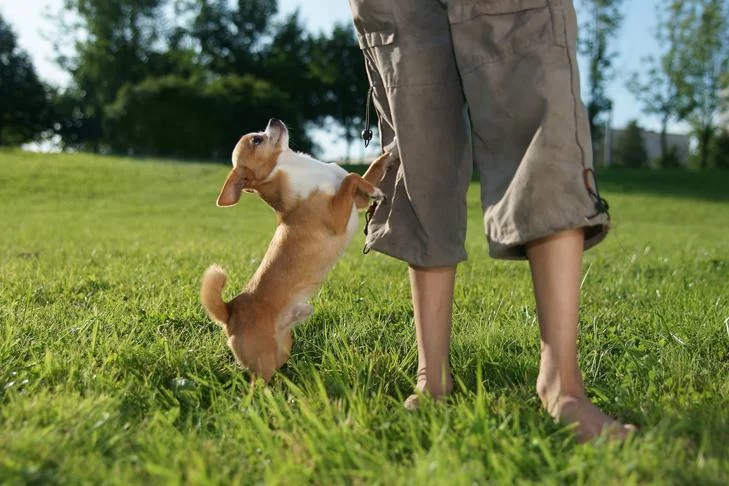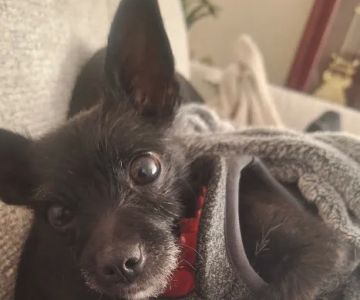Understanding Why Dogs Jump on People
If you've ever been greeted by your dog with an enthusiastic leap onto your chest, you know how frustrating it can be. While it might seem cute at first, this behavior can quickly become problematic, especially when your dog greets guests or strangers in an overly excited manner. I’ve experienced this firsthand with my own dog, Max, who used to jump on everyone—family members, visitors, even strangers in the park. In this article, I’ll share the steps I took to stop Max’s jumping habit and how you can do the same for your dog.
Why Do Dogs Jump on People?
To effectively stop your dog from jumping, it’s essential to understand why they do it. Jumping is a natural dog behavior that can stem from a few different motivations. The main reasons dogs jump on people include:
- Excitement and Greeting: Dogs are naturally social creatures. When they’re excited, especially when they see someone they love or a new person, they often jump as a way to greet them.
- Seeking Attention: Jumping is often a way for dogs to get attention. If your dog jumps and you pet them or talk to them, they may quickly learn that jumping is a way to get noticed.
- Reinforced Behavior: Sometimes, dogs jump because they’ve learned that doing so results in positive reinforcement, whether it’s attention, a treat, or simply excitement from their owner.
Understanding these motivations was key for me in addressing Max’s behavior. Instead of scolding him or pushing him away, I focused on teaching him more appropriate ways to greet people.
Steps to Stop Your Dog from Jumping
After recognizing why Max jumped, I started using a combination of training techniques to change his behavior. Here’s a detailed breakdown of the methods that helped me stop him from jumping on people.
1. Stay Calm and Consistent
The first lesson I learned was the importance of staying calm and being consistent. When Max jumped on me or anyone else, my initial reaction was to push him away or shout “No!” Unfortunately, this only made things worse by rewarding him with attention, even if it was negative. Instead, I learned to calmly turn my back to him, ignoring him completely. The goal was to avoid giving him any form of attention while he was jumping.
Over time, Max began to realize that jumping didn’t get him what he wanted. In fact, ignoring him was more effective than any scolding I could offer. By being consistent in my response, I made it clear to Max that jumping wasn’t the way to get attention.
2. Reward Calm Behavior
One of the most effective methods I used was rewarding calm behavior. When Max approached me without jumping and kept his paws on the ground, I immediately rewarded him with praise or treats. I made sure to give him positive reinforcement when he behaved appropriately, reinforcing the idea that keeping all four paws on the floor was the best way to greet people.
This strategy not only helped Max learn that calmness was desirable, but it also built a strong bond between us as I rewarded him for making good decisions. Positive reinforcement is key to teaching your dog what behaviors are acceptable, and it can be an incredibly powerful tool when stopping jumping behavior.
3. Teach the "Sit" Command
Teaching Max the “Sit” command was another crucial step in preventing him from jumping. Whenever he was about to greet someone, I would ask him to sit. At first, this took some patience, but with consistent practice, Max learned to sit calmly when someone entered the room. Not only did this stop him from jumping, but it also made him more relaxed during greetings.
By teaching your dog a solid “Sit” command, you can redirect their energy and prevent them from jumping. Practice this command regularly and make sure to reward your dog when they sit calmly without jumping. The “Sit” command becomes a clear alternative to jumping, providing your dog with a more acceptable way to interact with guests.
4. Redirect Their Energy
Sometimes, Max would get so excited that sitting wasn’t enough to stop him from jumping. During these moments, I would redirect his energy to a toy or a game. Instead of allowing him to jump, I’d distract him with a tug-of-war session or a fun ball toss. Redirecting his energy helped burn off some of that excitement and kept him engaged in a more controlled manner.
If your dog is particularly energetic, incorporating regular exercise into their routine can also help alleviate some of the pent-up excitement that leads to jumping. A tired dog is less likely to jump, so consider taking your dog for a walk or a play session before expecting them to greet people.
5. Practice with Friends and Family
One of the most helpful techniques for stopping Max’s jumping was practicing with friends and family members. It’s important to reinforce the training in different situations, especially when new people are involved. I would ask my friends to enter the house calmly and to ignore Max if he jumped. This allowed Max to learn that regardless of who was entering, he wasn’t going to get attention unless he remained calm.
Having different people involved in the training process is key, as it helps your dog generalize the “no jumping” rule. Over time, Max learned that jumping was not only unacceptable with me, but with everyone he met.
Dealing with Persistent Jumping
Despite all my efforts, Max’s jumping behavior didn’t stop overnight. If you’re in the same boat, don’t be discouraged. It took several weeks of consistency and patience before I started seeing significant progress. In some cases, persistent jumping may be due to anxiety or excitement, so you might need to consult a professional trainer if your dog’s behavior doesn’t improve.
When to Seek Professional Help
If your dog’s jumping behavior is persistent or seems to be linked to anxiety, seeking professional help might be the best course of action. A certified dog trainer can assess your dog’s behavior and create a personalized plan to address the issue. They can also help you work through any underlying causes of the behavior, such as separation anxiety or a lack of socialization.
At Hidden Brook Veterinary, we offer expert advice and training recommendations to help manage your dog’s behavior issues. Our team can guide you through the process of training your dog to stop jumping, ensuring that both you and your dog are happy and comfortable.












